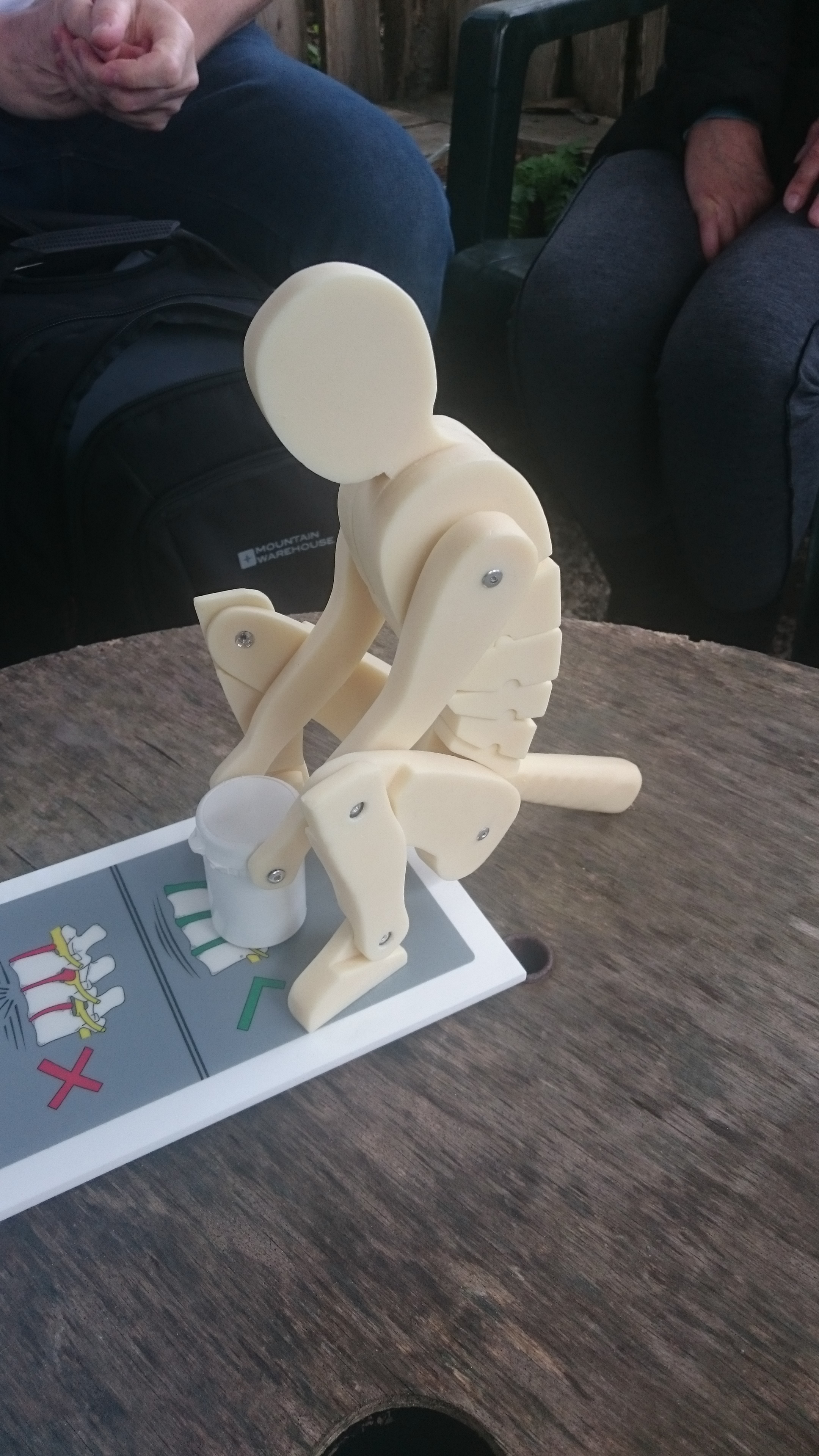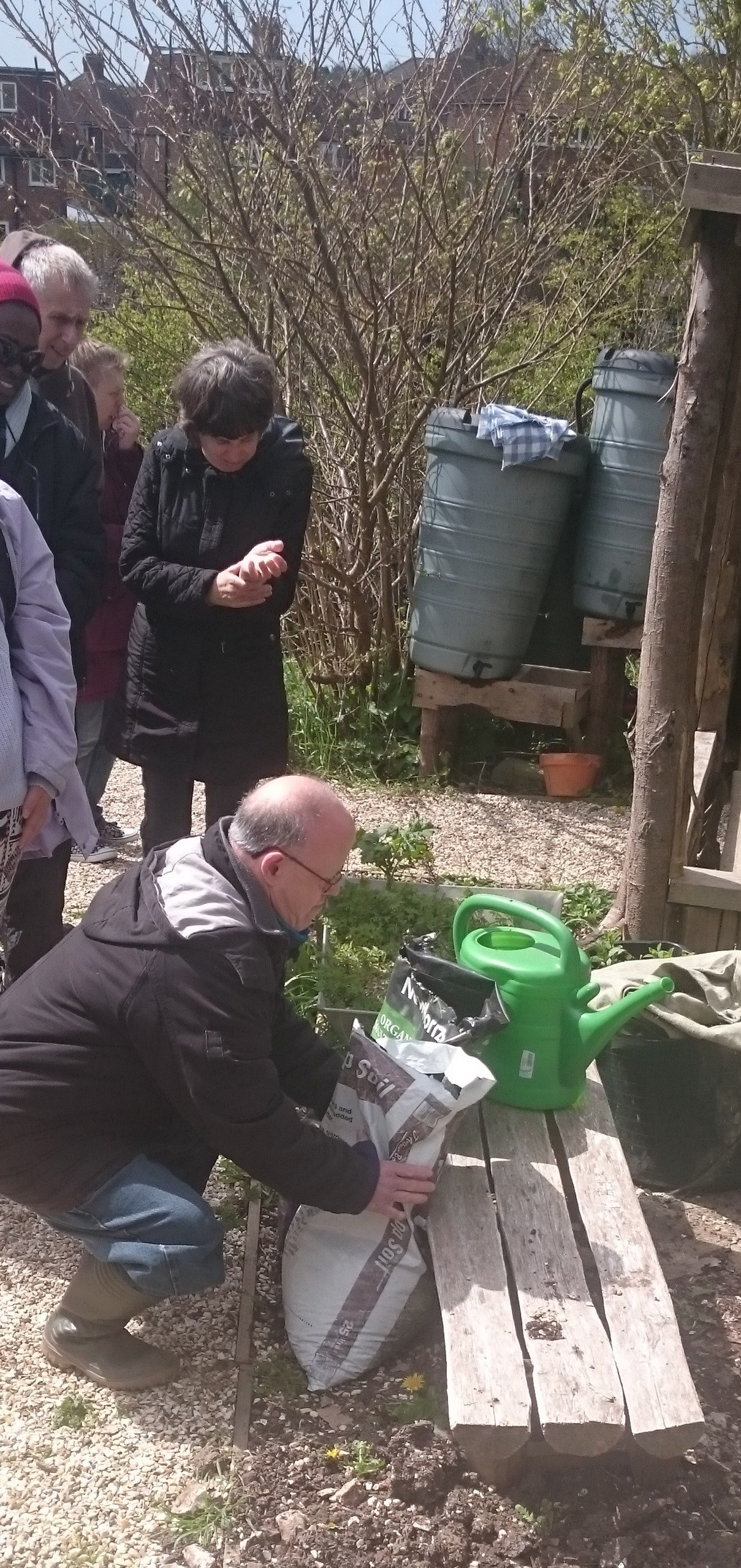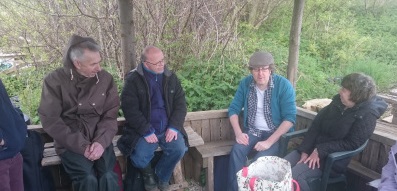James Aldcroft from Square Lemon Training came to talk to nine of us about how to lift things safely in our work at the allotment and how to take care of ourselves..
What we learnt
If something you’re doing hurts, stop what you’re doing. Talk to your key worker or a member of staff - ask for help and tell someone what happened.

Your lower back is the most vulnerable part of your back – it acts like a lever on a see-saw when you lift something - James showed us this with this rather fine moveable model
It's best to wear sensible shoes or boots to protect toes (from digging your fork in, for example, or dropping something heavy on your foot). Be careful of your fingers. Pay attention to the back of neck, knees and shoulders. What can cause damage is accumulative stress – repetitive movements.
James told us about T.I.L.E.
TASK-INDIVIDUAL-LOAD- ENVIRONMENT
T - Task
eg weeding
We discussed that this could involve a lot of repetitive bending – so the best thing to do is to get yourself in a comfy position on the ground. Use a kneeling mat to protect your knees.
Think about what you need to do your task and get all of it ready and near to you - like chefs do. For example, get your fork handy, and if you’ve got a wheelbarrow or bucket for weeds, put it where you are before you kneel.

Don't do lots of repetitive twists because they aren't good for your back.
When you turn when standing, try to turn your whole body with your feet rather than twisting at the waist and stretching your back.
Another Task at the allotment might be planting – and similarly to weeding - gather what you need close to you - fork or trowel, watering can, and the plants themselves.
I - INDIVIDUAL
The height & size of person & their strength, whether they've got an injury or disability, a hernia for example.
If you’re doing a two-person lift, try to pair similar-sized people
L - LOAD
Look at your load, ie the thing you’re going to lift before you lift it – assess it. How full it is and what's in it?
Assess the weight before you lift. Get a good grip from the bottom of the object, if there’s no handle. You don't want it to slip.
Lifting safely - bend from your knees not your back, using your thigh muscles.
When you’re lifting - get up close to the object and hold it against your body. Wear old clothes so you don’t mind.
Keep your head straight. Chin down, relax.
A full watering can and a full bucket can be heavy – use a wheelbarrow to move them where you can.
A good wheelbarrow has good hand grips and inflatable tyres
Halve the size of a heavier load.
E - Environment
You’re more likely to hurt yourself when it's cold, icy wet and raining and you hold yourself more tightly.
It's a good idea to do little stretches when you get to allotment. It adds to wellbeing - warming up- awareness of how you feel.
Be aware that things are heavier when wet.
Lighting effects people and how safe they are – when it’s dark or gloomy, you’re more likely to trip and slip.
Key lesson of the session: think in advance what you're about to do – plan it, don’t rush and assess what you’re doing and you’re less likely to hurt yourself
Thank you James!
Emma Chaplin






